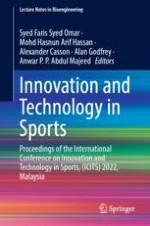2023 | Book
Innovation and Technology in Sports
Proceedings of the International Conference on Innovation and Technology in Sports, (ICITS) 2022, Malaysia
Editors: Syed Faris Syed Omar, Mohd Hasnun Arif Hassan, Alexander Casson, Alan Godfrey, Anwar P. P. Abdul Majeed
Publisher: Springer Nature Singapore
Book Series : Lecture Notes in Bioengineering
